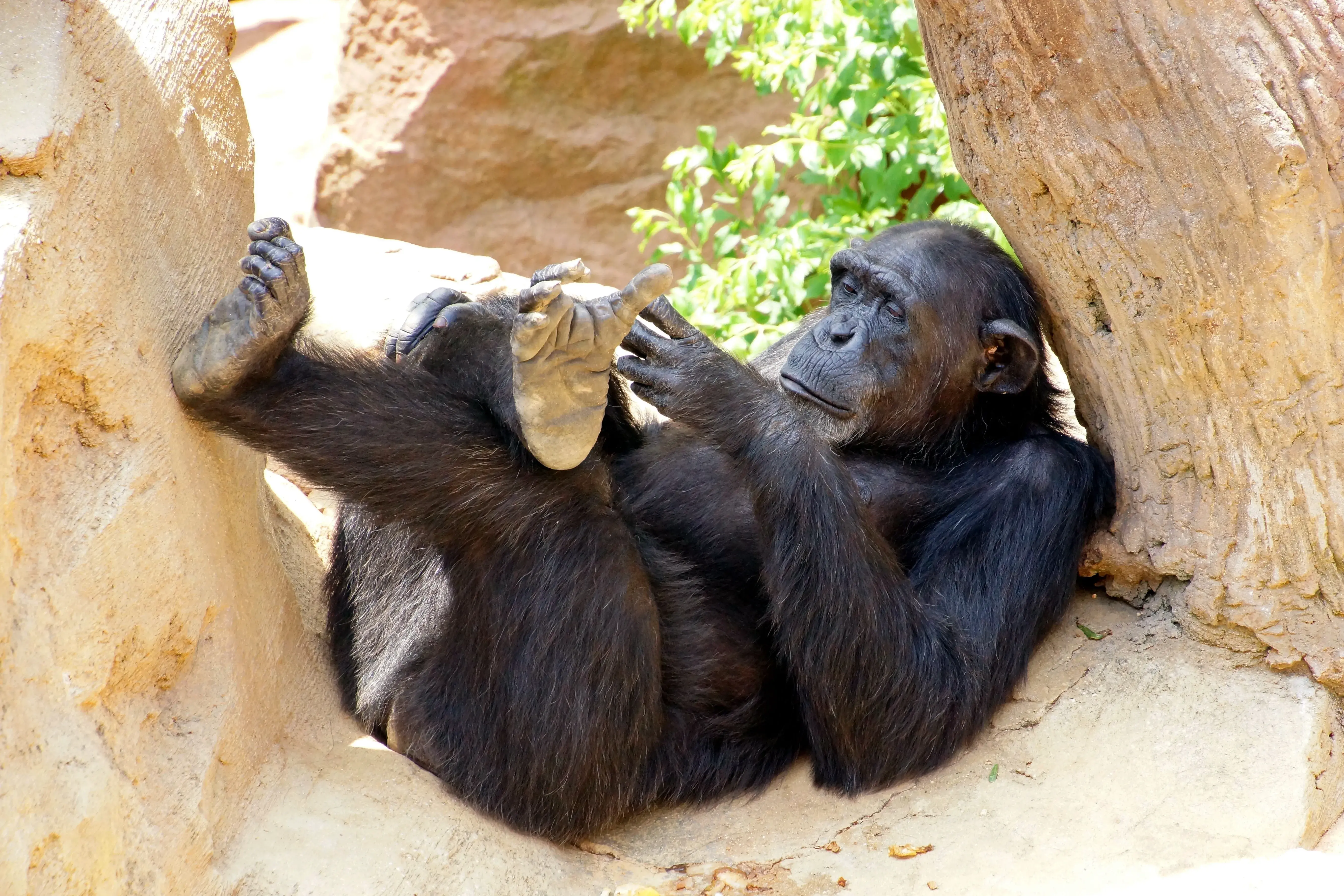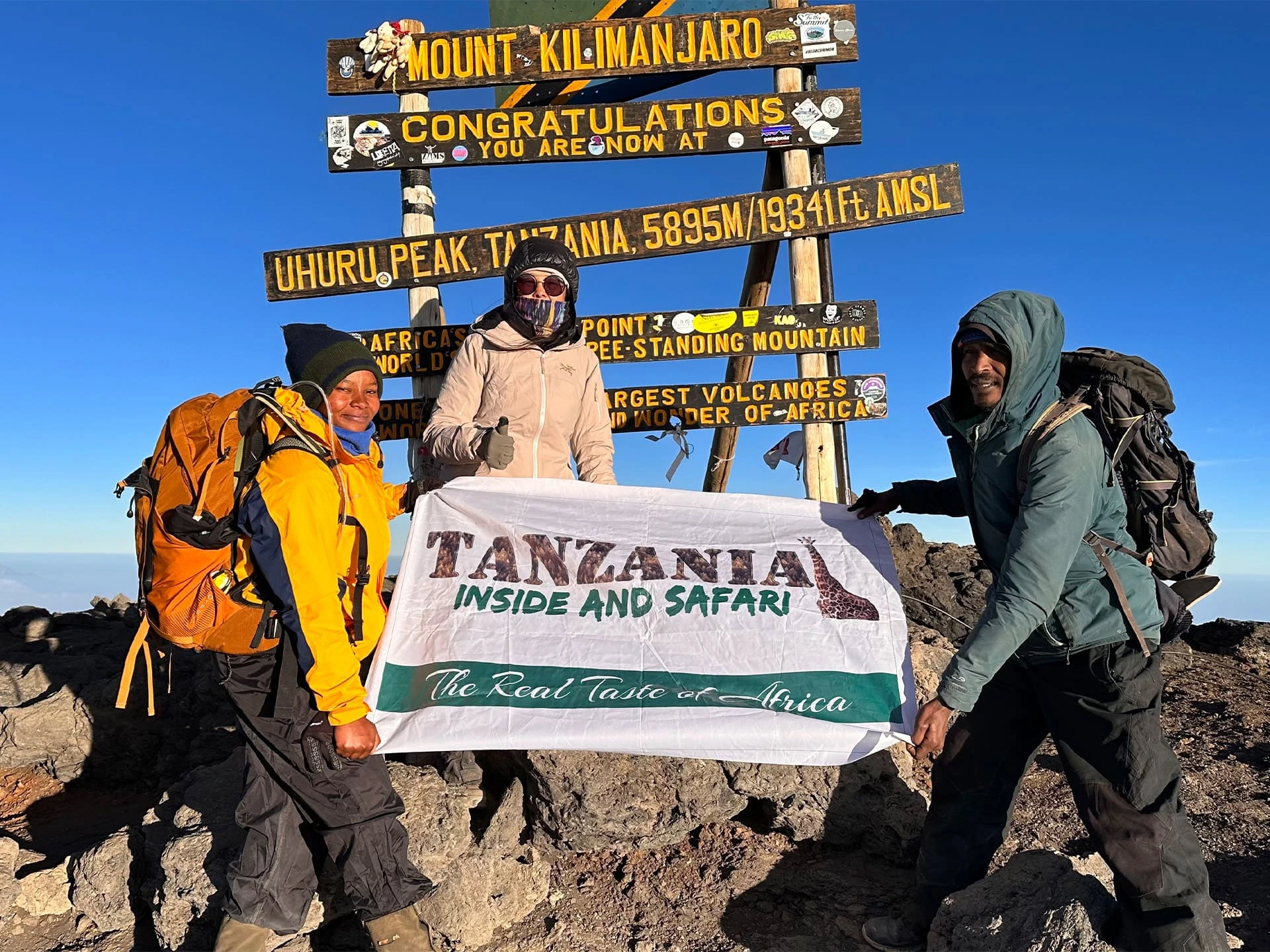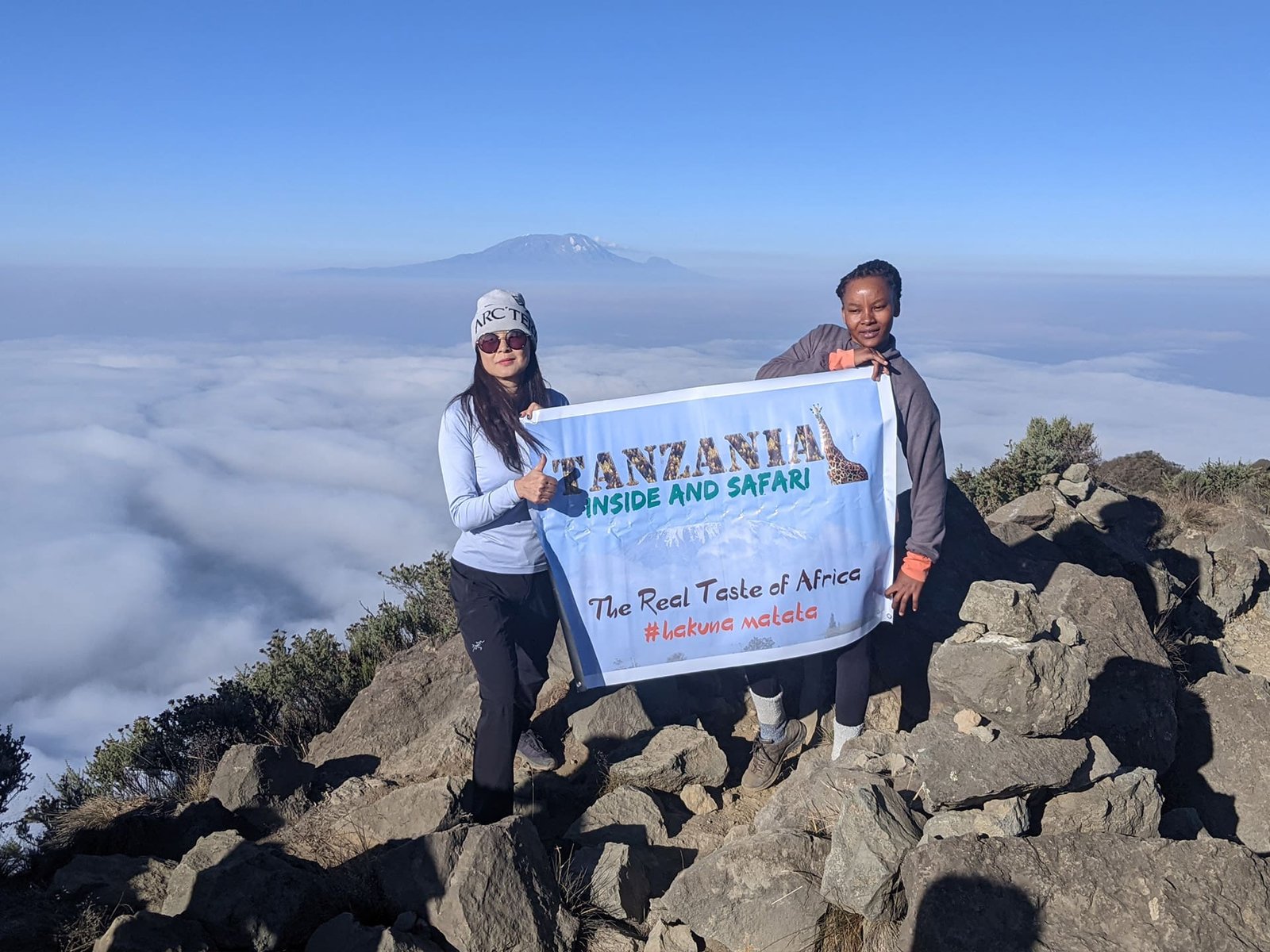
Mt Kilimanjaro National Park
Kilimanjaro has become one of Tanzania’s most visited parks. Unlike the other northern parks, this isn’t for the wildlife, although it’s there. Rather, coming here is all about gazing in awe at a mountain on the equator capped with snow, and to climb to the top of Africa.
At the heart of the park is the 5896m Mt Kilimanjaro, Africa’s highest mountain and one of the continent’s most magnificent sights. It’s also one of the highest volcanoes and the highest freestanding mountain in the world, rising from cultivated farmlands on the lower levels, through lush rainforest to alpine meadows, and finally across a barren lunar landscape to the twin summits of Kibo and Mawenzi. (Kilimanjaro’s third volcanic cone, Shira, is on the mountain’s western side.) The lower rainforest is home to many animals, including buffaloes, elephants, leopards and monkeys, and elands are occasionally seen in the saddle area between Kibo and Mawenzi.
A trek up Kili lures around 30,000 trekkers each year, in part because it’s possible to walk to the summit without ropes or technical climbing experience. But don’t be fooled by the number of people who climb
Kilimanjaro – this is a serious undertaking. While many thousands of trekkers reach Uhuru Peak without major difficulty, many more don’t make it because they suffer altitude sickness or simply aren’t in good enough shape. And every year some trekkers and porters die on the mountain. Come prepared with appropriate footwear and clothing, and most importantly, allow yourself enough time. If you’re interested in reaching the top, seriously consider adding at least one extra day onto the ‘standard’ climb itineraries: accepted medical advice is to increase sleeping altitude by only 300m per day once above 3000m – which is about one-third of the daily altitude gains above 3000m on the standard Kili climb-routes offered by most operators.
Here are our Kilimanjaro Trekking tour itineraries
Kilimanjaro area
Moshi
The noticeably clean capital of the densely populated Kilimanjaro region sits at the foot of Mt Kilimanjaro and makes a good introduction to the splendors of the north. It’s a low-key place with an appealing blend of African and Asian influences and a self-sufficient, prosperous feel, due in large part to it being the centre of one of Tanzania’s major coffee-growing regions. Virtually all visitors are here to climb Mt Kilimanjaro or to recover after having done so.Sights & Activities
Even inside the city, Mt Kilimanjaro is the main attraction and you’ll probably be continually gazing north trying to catch a glimpse. Most of the time it will be hidden behind a wall of clouds, but nearly every evening after 6pm it emerges from the mist to whet your appetite for altitude. From December through June it’s usually visible during the mornings too and usually topped by much more snow.Marangu
Nestled on the lower slopes of Mt Kilimanjaro, 40km northeast of Moshi, amid dense stands of banana and coffee plants, is the lively, leafy market town of Marangu. It has an agreeable highland ambience, cool climate.Marangu makes a convenient base for Kili climbs using the Marangu route or Rongai route, and it’s an enjoyable stop in its own right. Marangu is also the heartland of the Chagga people, and there are many possibilities for walks and cultural activities.
Marangu means ‘place of water’ and the surrounding area is laced with small streams and waterfalls (most with a small entry charge) to visit.
Sights & Activities
Chagga Live Museum visit (a small outdoor museum illustrating traditional Chagga life).You will be accompanied by English speaking guide to other attractions in the area, including rather claustrophobic ‘caves’ (actually dugout holes and tunnels) that were used by the Chagga for hiding during the era of Maasai raids about 200 years ago, a sacred tree, local blacksmiths’ workshops and waterfalls. About 6km southwest of Marangu is
Day hikes to Mandara Hut (10km one way; allow around three hours up and
1⁄2 hours back) in Mt Kilimanjaro National Park can also be arranged.




















